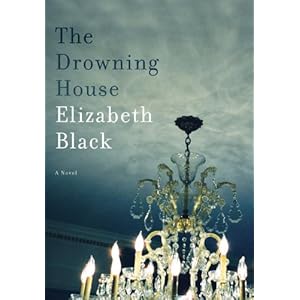Michelle Richmond Events
Sept. 23, Litquake Benefit
Enjoy Mexican fare, end-of-summer sun, and good company at the home of Phil and Christine Bronstein. Featuring Vikram Chandra, Peter Orner, Alejandro Murguía, Jaqueline Winspear, & Michelle Richmond.
Tickets, $75. Purchase here.
October 13, Litquake Litcrawl
Why There Are Words, Litcrawl, San Francisco, venue & time TBA
October 18, 2012, In Conversation with Louise Erdrich, San Francisco JCC
Join me and Pulitzer Prize finalist Louise Erdrich at 2:00 p.m. for a discussion of Erdrich’s latest novel, The Round House, “an indelible portrait of family and memory, injustice and vengeance, friendship and growing up on the Ojibwe Reservation in North Dakota.” Tickets: $15, or $12 for members. Reserve your space here.
Lafayette Library, A Literary Feast: Annual Authors Dinner, Nov 3, 2012
Join me, Annie Barrows, Tamim Ansary, Karen Joy Fowler, Adam Johnson, John Lescroat, Joyce Maynard, Ellen Sussman, and other Bay Area authors at a gala to benefit the programs of the Lafayette Public Library and Learning Center
July 25, 2012, Mountain View Public Library, 7 p.m.
Join me for a discussion of the writing life, publishing, and process. Bring your book club or your writing group. Q&A.
March 14, 2012, Walnut Creek Library Gala, Authors Under the Stars
Update: the gala raised $50,000 for the wonderful programs at the Walnut Creek Library.
Jan. 13, 2012 : Literary Death Match at the Elbo Room in San Francisco, 647 Valencia Street, 7:15 p.m.
About the event: My third appearance as an LDM judge, along with SF comedic mastermind W. Kamau Bell (check out his comedy album Face Full of Flour) and Pop Up Magazine producer and New Yorker contributor Douglas McGray. Contestants: Litquake founder Jane Ganahl (author of Naked on the Page), writer/activist/showman Chicken John Rinaldi, short fictionist (and LDM SF’s own) Alia Volz, and Jack Wakes Up author Seth Harwood. Read more & order tickets here. Michelle’s other appearances at Literary Death Match: Michelle on Literary Death Match: Episodes 1 (contestant), 5 (judge), 9 (judge), 19, & 42
Jan. 18, 2012: Reading & chat at Hillsborough Town Hall
Free and open to the public, Hillsborough, CA 11:00 a.m. I’ll be discussing The Year of Fog and No One You Know, answering questions, and signing books. Event host: Heather Weir. Book sales: Books Inc., Burlingame
Feb. 13, 2012: Litquake, Love Hurts at the Makout Room in San Francisco
I’ll be joining a cast of San Francisco writers to read truly horrendous passages on love and lust from literature. Yes, this is how we prepare for Valentine’s Day in the City by the Bay.
Feb. 13, 2012: St. Elizabeth’s Home Fundraiser, San Jose, CA
Feb. 26: Feast Your Mind: Fundraise for the Ronald C. Warwick Jewish Day School
Local luminaries, such as Larry Baer, San Francisco Giants president and CEO; Leor Stern, who launched Google’s field operations in Israel; Michelle Richmond, New York Times best-selling author; Jon Jenkins, principal investigator at the SETI Institute; and Akiva Tor, consul general of Israel for the Pacific Northwest, will be among the 16 guests of honor at homes in San Francisco, San Mateo, Burlingame, San Carlos, Hillsborough and Belmont. Open to the public. Click title link for tickets.
Feb. 28: Los Altos High School Writers Week

